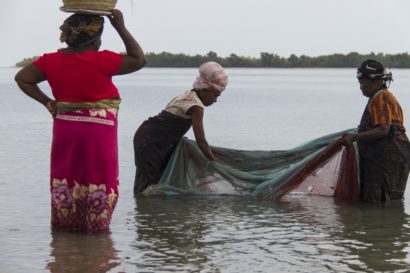 Gender Equality
Gender Equality
Digital information systems serving the social protection sector, and especially social assistance, are increasingly prominent and will continue to be, as is the case within all other sectors. “Why? Because the ability of a country to care for its people and respond to their lifecycle needs depends on its ability to identify those who are… Read more
Water insecurity is a significant, heavily gendered, and growing driver of poverty, vulnerability and risk. This paper explores the linkages between the social protection, water and gender sectors. It examines the ways in which water insecurity restricts female participation in social protection (and related education and employment opportunities) and undermines social protection efforts to promote… Read more
The Sahel Adaptive Social Protection Programme (SASPp) was launched in 2014 to support the design and implementation of adaptive social protection programmes and systems in six Sahel countries: Burkina Faso, Chad, Mali, Mauritania, Niger, and Senegal. The SASPp aims to increase access to adaptive social protection systems for poor and vulnerable populations to help them… Read more
This was originally posted on DAI’s website. Nepal is in the midst of a demographic shift. Over the past three decades, its fertility rate has declined and population growth has stalled. The country has quickly moved from a high-mortality, high-fertility society to a low-mortality, low-fertility society. Although this shift is an encouraging indicator of development,… Read more
Over the last three decades, Nepal has experienced a demographic shift with declining total fertility rates, population growth, and improvements in life expectancy. Despite these positive shifts, the Nepalese people remain vulnerable to natural disasters, health problems, and economic shocks—45 percent of households in Nepal earn less than $2 a day. A robust social protection… Read more
This blog originally appeared on the Institute of Development Studies website, and was written by Stephen Thompson. In January 2020, a gender and disability workshop was held at IDS as part of the Inclusion Works and Disability Inclusive Development programmes. The aim was to strengthen the inclusion of gender mainstreaming within the disability programmes through raising awareness of gender… Read more
The UK’s Department for International Development (DFID) has contracted OPM to carry out a scoping study and literature review of gender-sensitive public works. This involves collecting good practices and examples from across the globe, as well as identifying potential areas for intervention (and piloting) in Mozambique. The terms of reference (TOR) for this study required… Read more
The UK’s Department for International Development (DFID) has contracted OPM to carry out a scoping study and literature review of gender-sensitive public works. This involves collecting good practices and examples from across the globe, as well as identifying potential areas for intervention (and piloting) in Mozambique. This report is a scoping study of the potential… Read more
The past decade has seen progress in advancing gender equality and women’s and girls’ empowerment through social protection. However, significant challenges persist. Coverage gaps for women of working age, and for children and adolescents, remain high. Addressing gender inequality is often seen as synonymous to targeting women as a vulnerable group, or in their role… Read more
This annual review assesses the outputs of the Increasing sustainable access to water, sanitation and hygiene (WASH) in the Democratic Republic of Congo (DRC) programme, and how they contribute to expected outcomes and their sustainability. The review also includes updated recommendations for improving integration of gender into WASH programming and assesses the implementation of the… Read more
The main barriers to women’s economic inclusion in Tanzania are: time poverty (because women have to spend so much time on household chores); lack of education; reproductive health pressures; lack of assets and access to financial services; in the case of agriculture – lack of access to male labour and inputs such as fertiliser; in… Read more

 Gender Equality
Gender Equality







